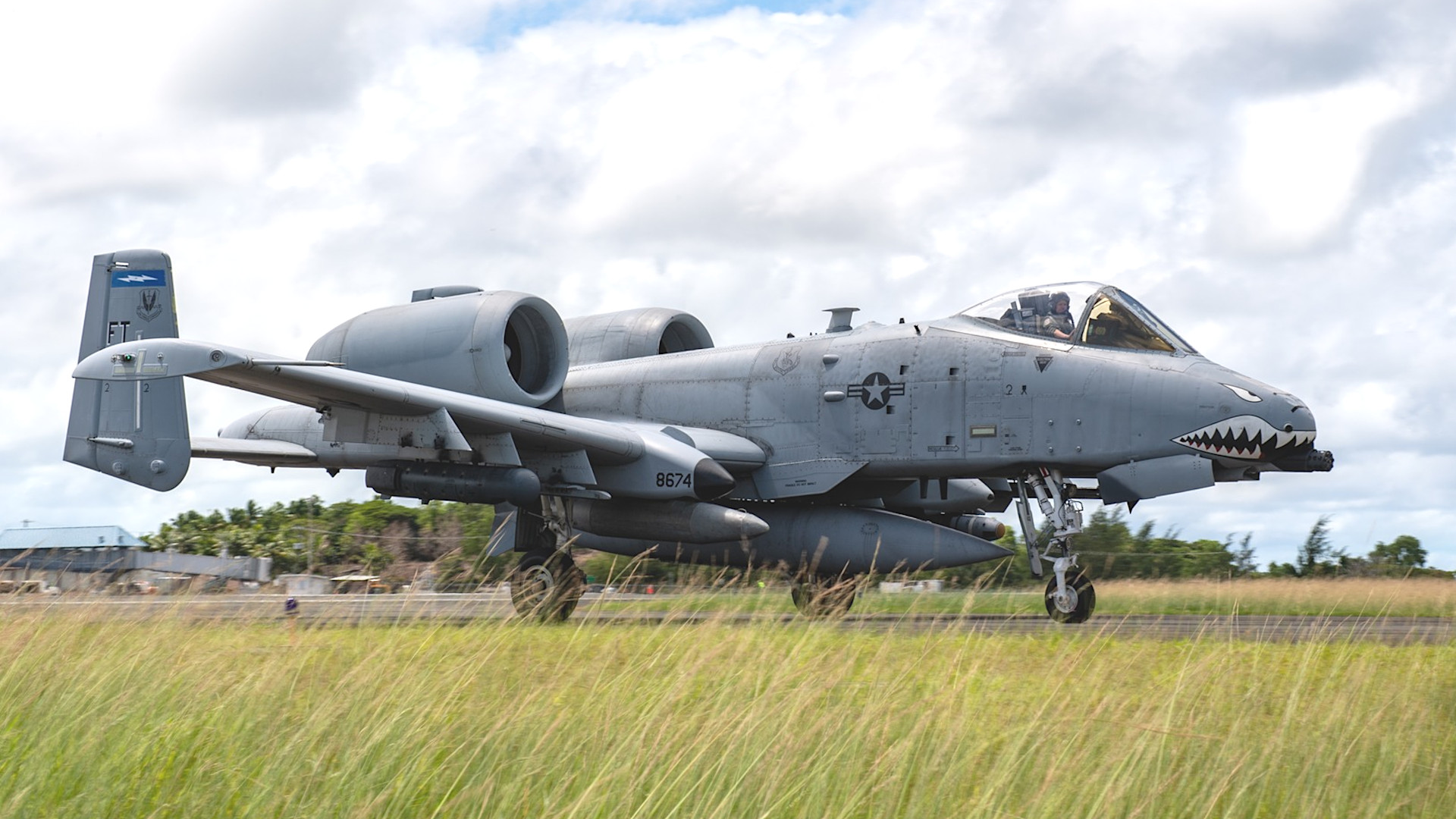A U.S. Air Force detachment consisting of at least two A-10C Warthog ground attack jets, pilots, and various support personnel is currently operating out of tents at Roman Tmetuchl International Airport in the South Pacific archipelago nation of Palau. The contingent, detached from a larger force of A-10Cs temporarily deployed on the U.S. island of Guam, is taking part in an exercise meant to explore how the service could conduct operations from a distributed array of locations in a future major conflict, such as one against China. This rare deployment is all part of larger Air Force efforts to develop new and improved concepts of operation in the face of ever-growing threats to larger, established base facilities, especially in the Pacific Region.
A-10Cs and personnel from the Air Force’s 23rd Wing, headquartered at Moody Air Force Base in Georgia, first began to arrive at Andersen Air Force Base on Guam on October 23. The commander of the 23rd Wing, Col. Russell Cook, posted on Facebook on October 30 that “The gang’s all here!,” indicating the initial deployment of which is now referred to as the 23rd Air Expeditionary Wing (AEW) had been completed. That post included pictures showing at least 12 Warthogs at Andersen, along with an HC-130J Combat King II combat search and rescue aircraft, also from the 23rd Wing, and a C-130J Hercules airlifter from the 374th Airlift Wing at Yokota Air Base in Japan.
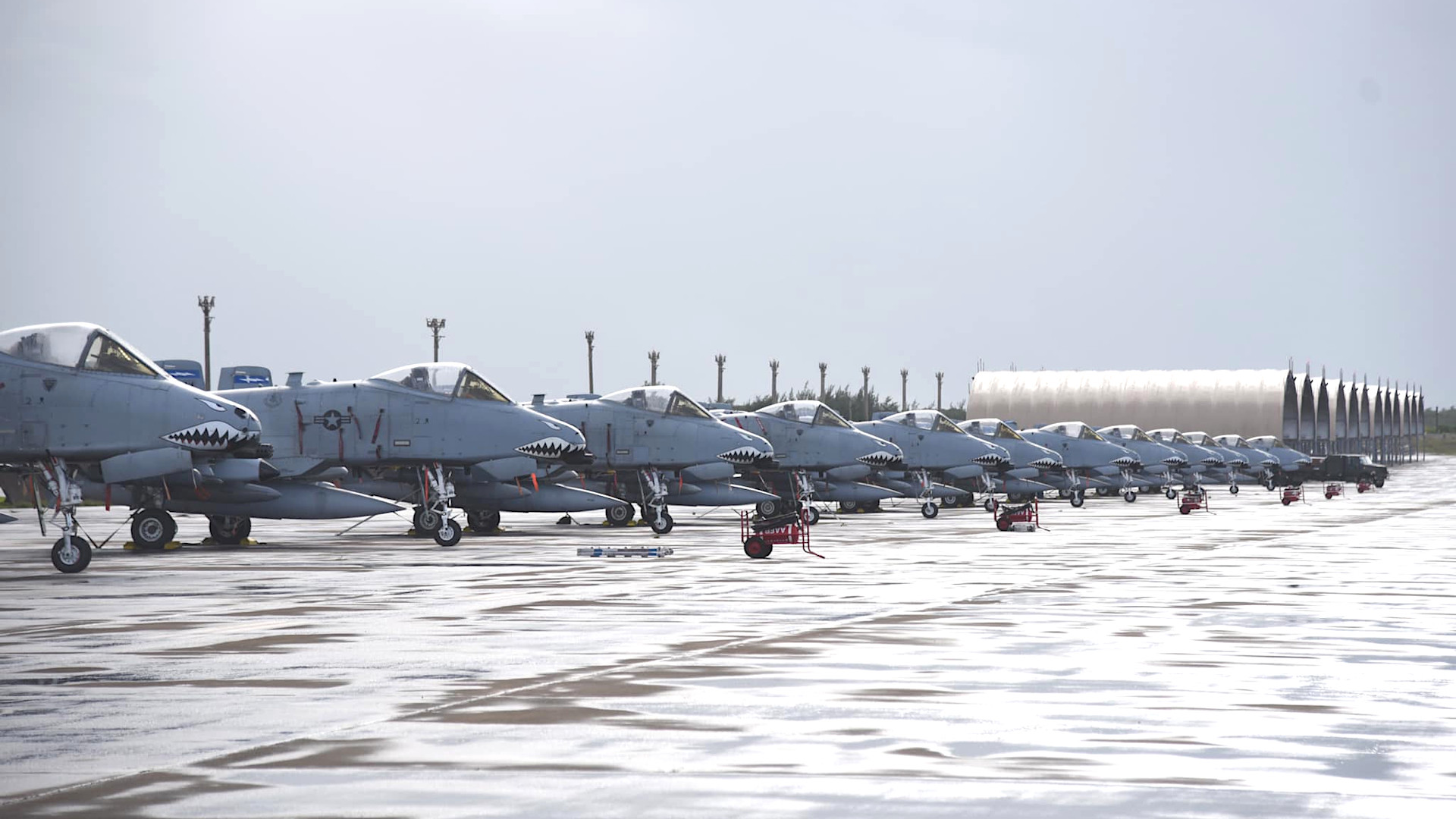
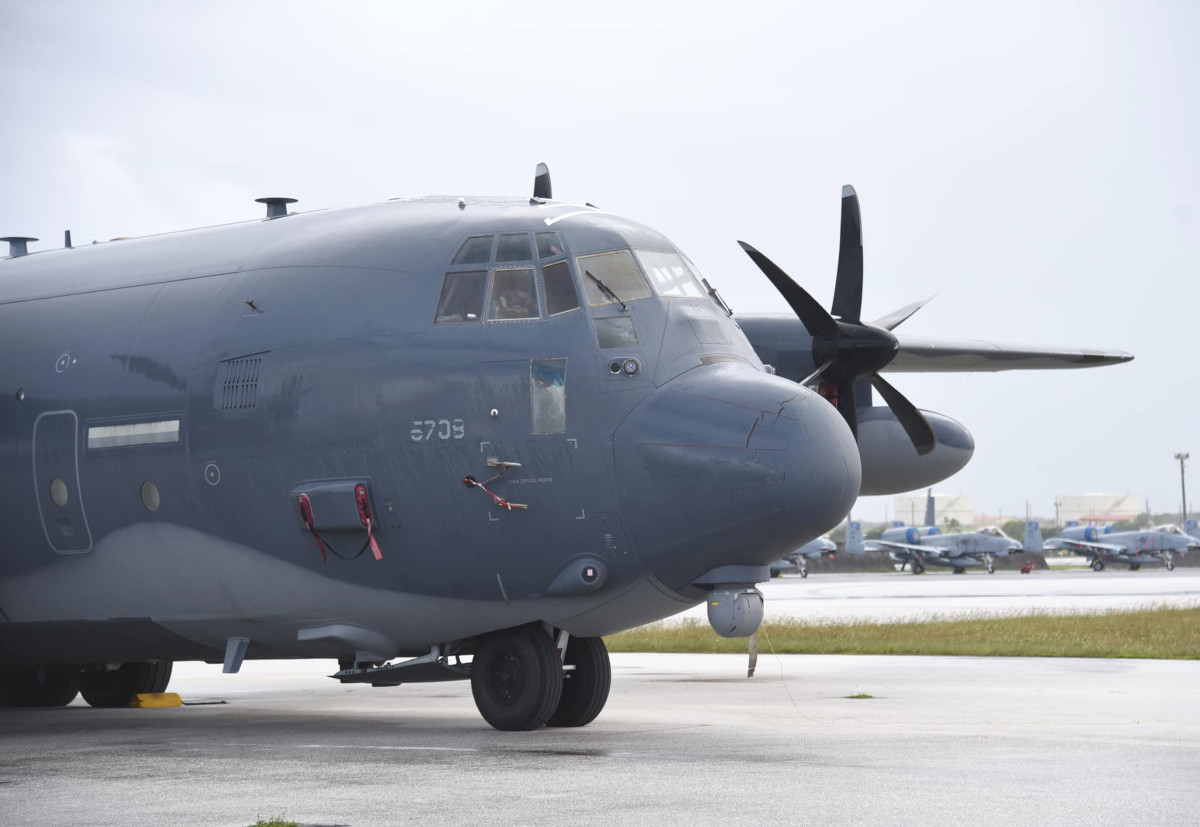
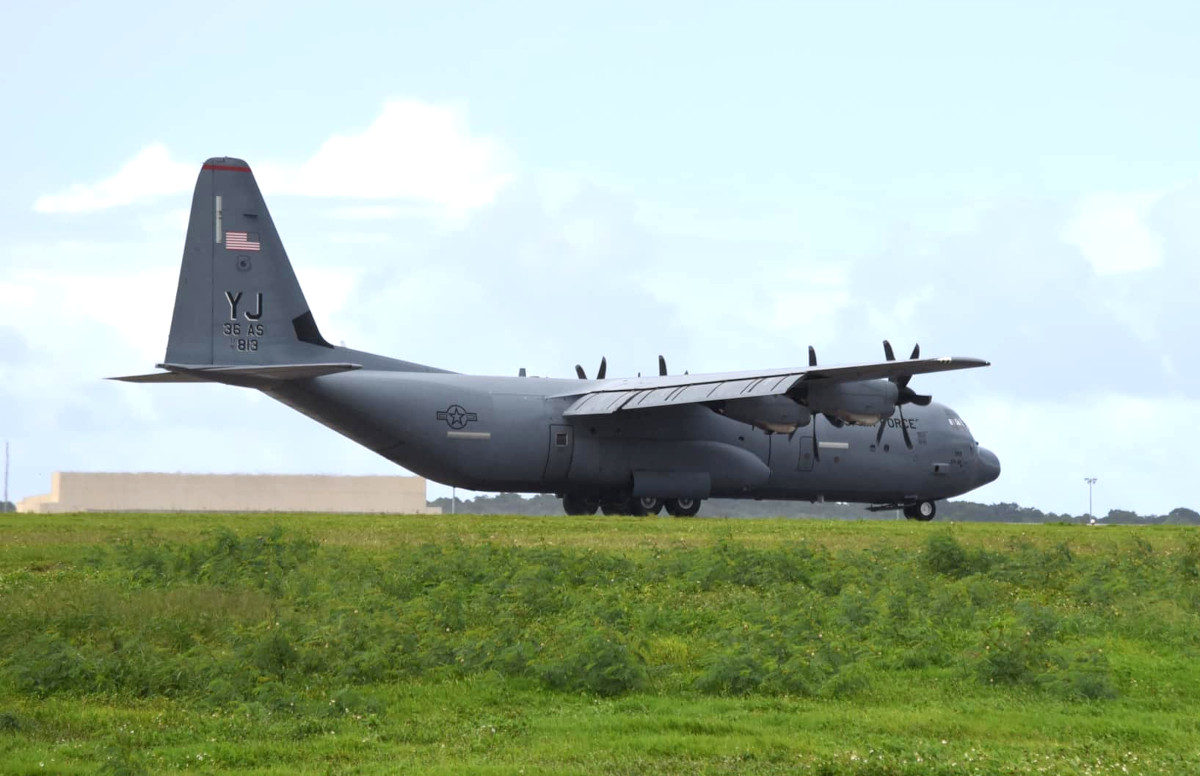
“Within 24 hours, the 23 Air Expeditionary Wing opened a forward operating site and received fighter aircraft and combat rescue forces. The forward operating site enables sustained fighter, combat rescue, and airlift operations for weeks at a time,” Col. Cook wrote in another Facebook post yesterday. “The site include[s] communications, security, bed down, and logistical support for operations away from the main base. The key to agile operations is multicapable airman of the air base squadron and partners.”
The post does not specifically mention Palau, but the attached pictures clearly show Roman Tmetuchl International Airport’s distinctive small tarmac. A spokesperson for Pacific Air Forces (PACAF), the top Air Force command in the Pacific region, had previously confirmed that at least a portion of the force from the 23rd Wing that was heading to Guam would also operate, at least for a time, from Palau as part of the current exercise, which is nicknamed Iron Thunder.
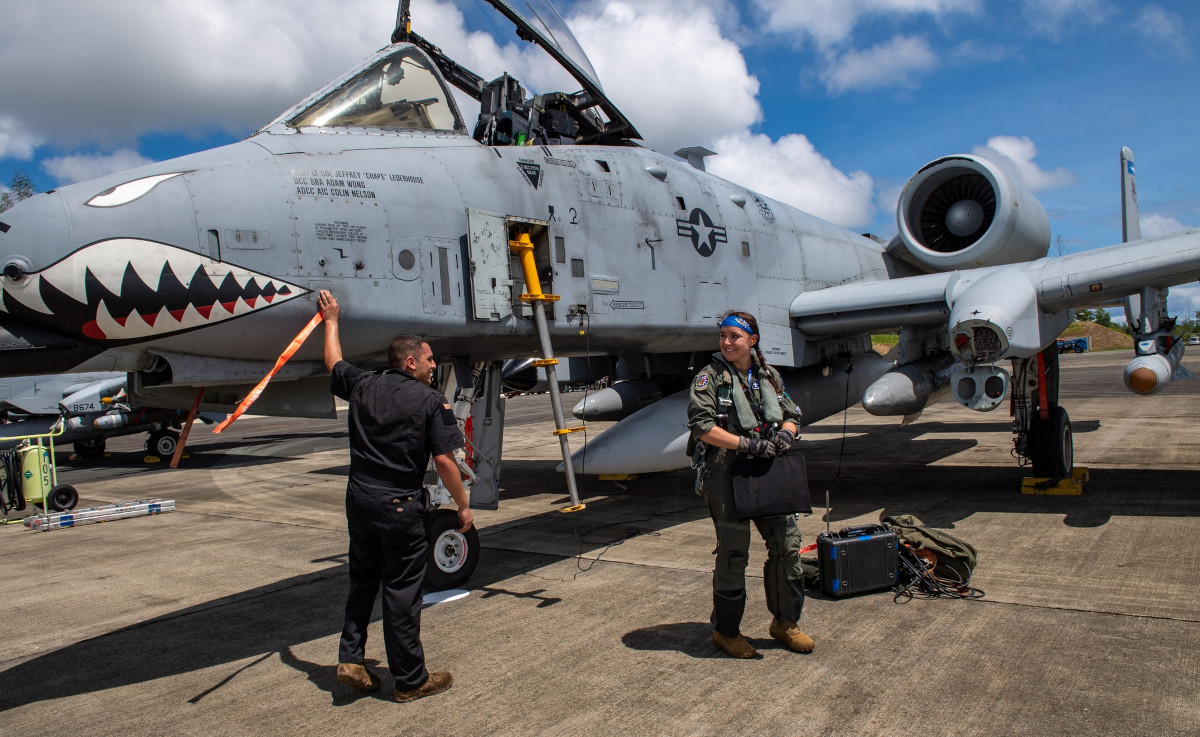
In addition to A-10s, the pictures Col. Russell posted show that the deployment in Palau includes Air Force pilots, ground crew personnel, and security forces, as well as support from private contractors from CTSI Logistics, but the total size of the contingent is unclear. At least some of the uniformed personnel are from units assigned to the 93rd Air Ground Operations Wing, also headquartered at Moody.
The HC-130J from the 23rd Wing and the C-130J from the 374th Airlift Wing are also seen in some of the pictures, indicating that they at least helped establish the forward operating base, which consists primarily of five large tents within the airport’s perimeter. The HC-130J is configured in part as an aerial refueling tanker for helicopters and is capable of establishing forward arming and refueling points (FARP) on the ground. It has been utilized to support the forward deployment of combat jets to austere locations in the past.
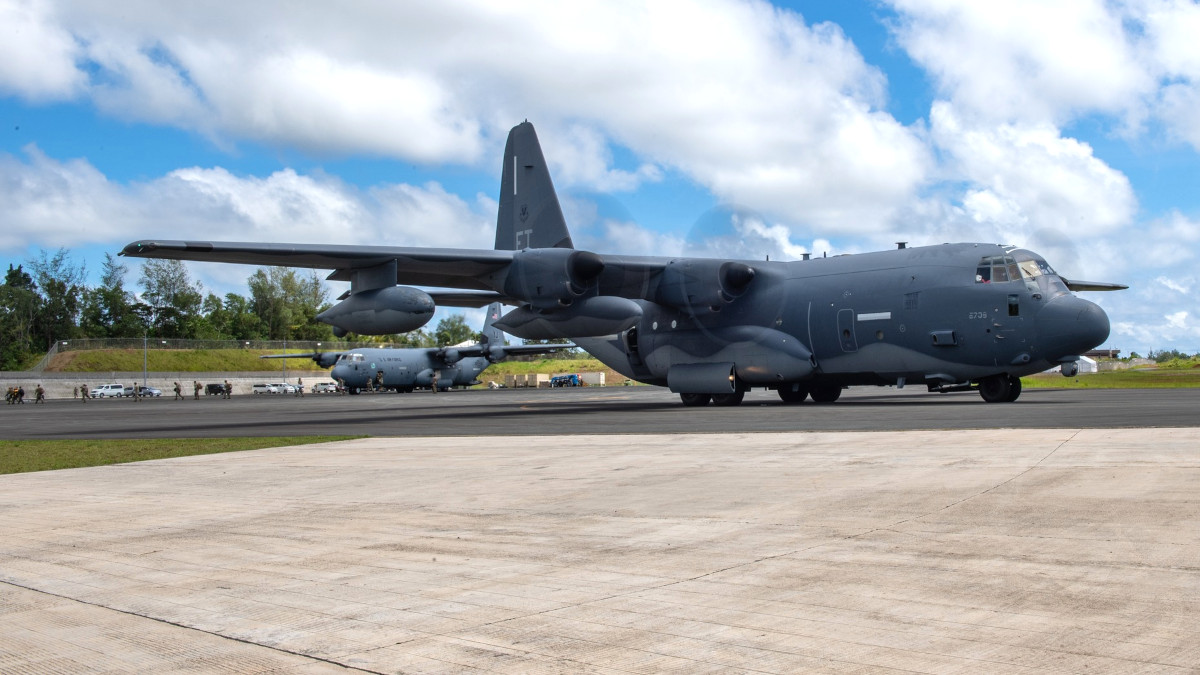
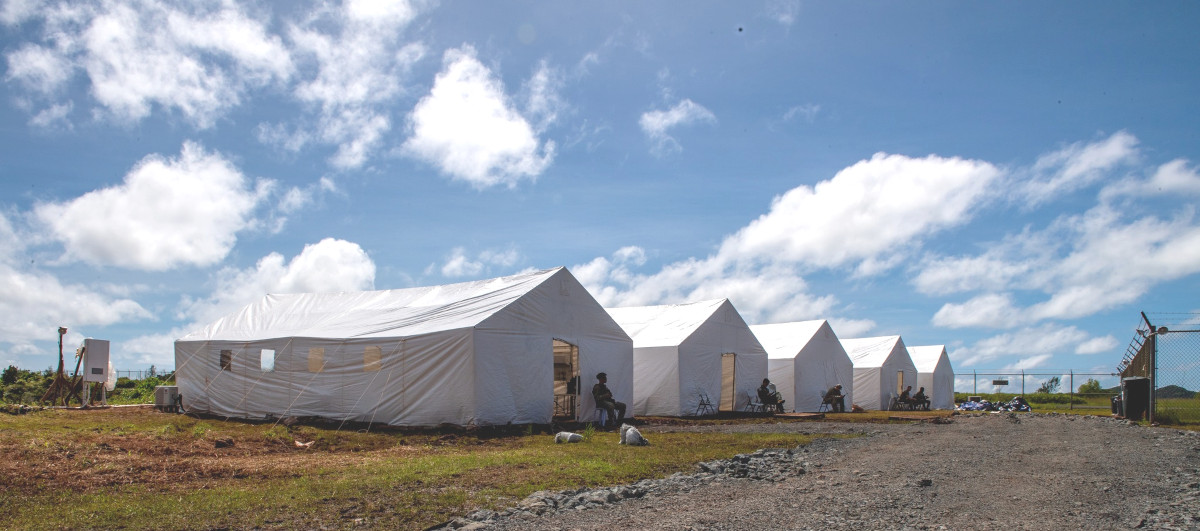
Although it’s not clear if the C-130s are still in Palau supporting operations there, low-resolution satellite imagery from Planet Labs, taken on November 1st, suggests at least one still is.
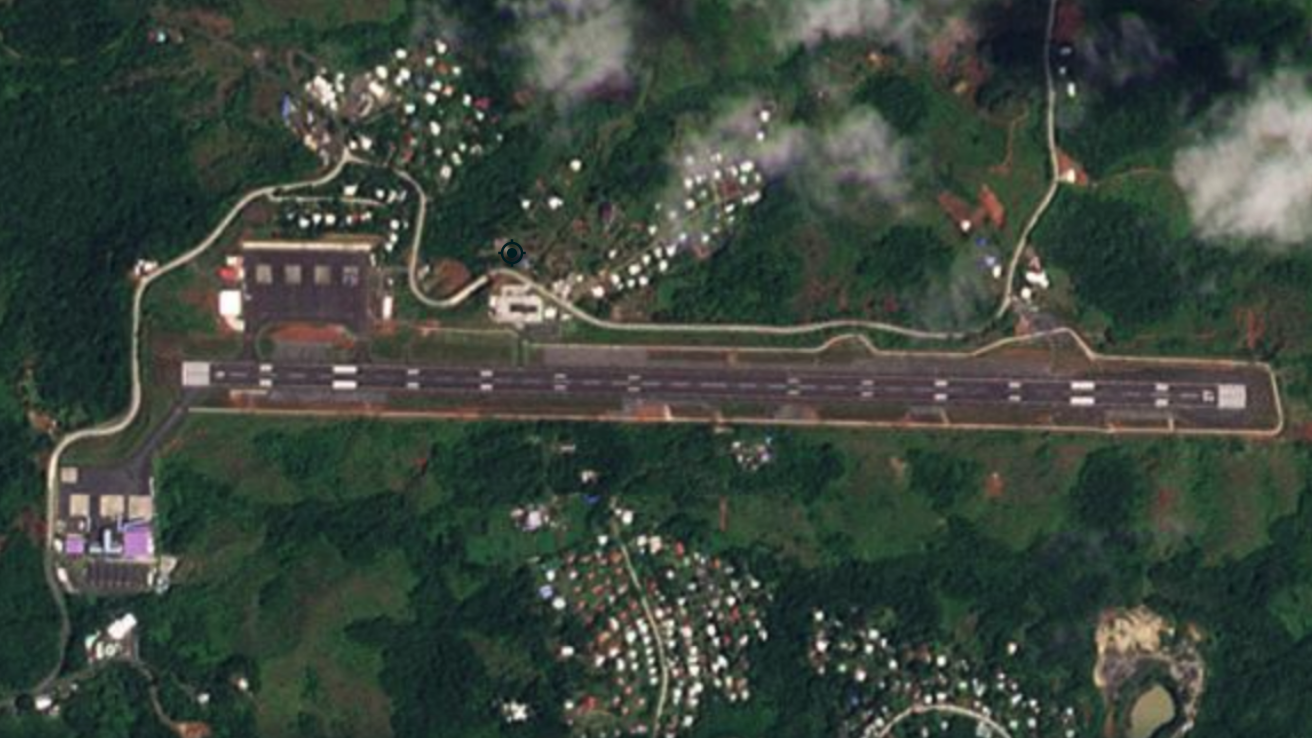
Specific details about Iron Thunder and what kind of scenarios the A-10Cs will face appear to be limited. “The United States is committed to being ready to execute missions quickly in unpredictable ways and rapidly respond to adversary moves within and across theaters of operation,” an extremely brief Air Force press release on the deployment of the Warthogs to Guam says.
The deployment “is designed as a way for Pacific Air Forces to exercise their ability to generate combat air power from dynamic force elements while continuing to move, maneuver, and sustain these elements in geographically-separated and contested environments,” reads a caption to a picture of some of the A-10Cs at Andersen that was posted on the U.S. military’s Defense Visual Information Distribution Service (DVIDS) website last week.
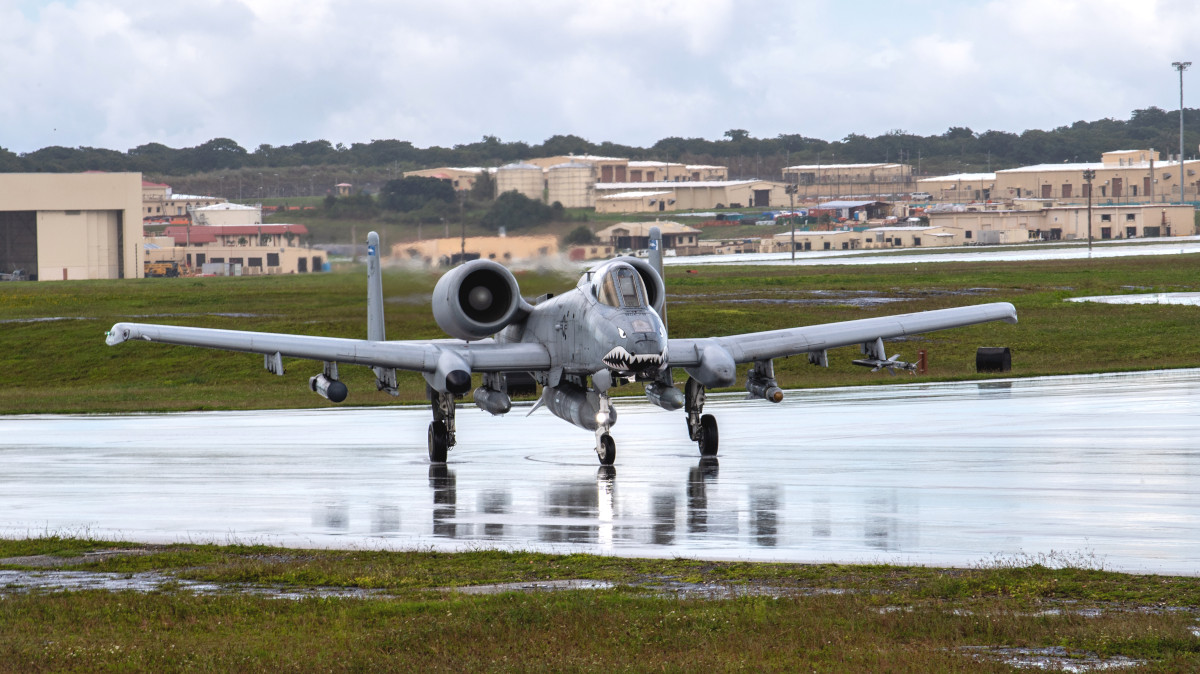
The PACAF spokesperson told Air & Space Forces Magazine that this “demonstrates the ability of the Air Force to command and control forces spread out through multiple locations and rapidly deploy airpower to support Palau.”
Air Force Times previously reported that “the Air Force indicated the A-10 unit will lead in ‘Operation Iron Thunder,’ a Pacific Air Forces exercise that will cobble together disparate aircraft and teach them to work together while separated by distance and electronically jammed communications.”
Exactly what other aircraft, beyond the HC-130J and C-130J supporting the deployment of the A-10Cs, will take part in Iron Thunder is not immediately clear, either. B-1B bombers are currently on Guam as part of a separate Bomber Task Force (BTF) deployment, but could participate in this event, as well.
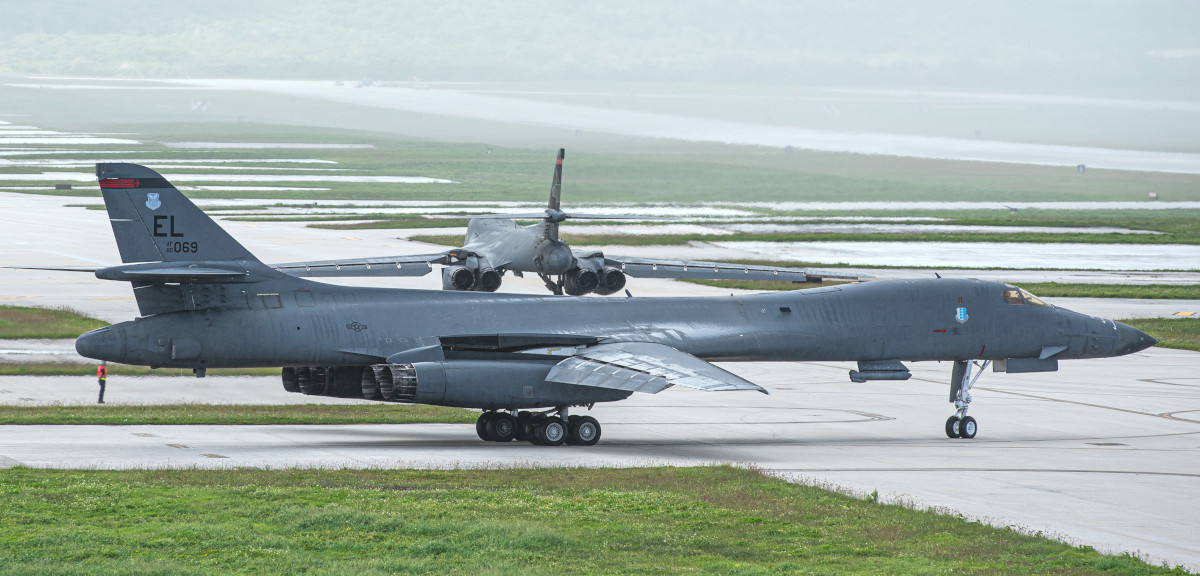
What is clear is that demonstrating the ability to operate combat jets from Palau is part of the Air Force’s effort to establish various distributed and expeditionary concepts of operations, with a particular focus on preparing for future high-end conflicts in the region, potentially against Chinese forces. The Air Force has generally referred to this new doctrine as Agile Combat Employment (ACE), with the U.S. military, as a whole, also using the term Dynamic Force Employment (DFE). In broad strokes, ACE and DFE are both centered heavily on irregular and unpredictable deployment concepts and making use of a greater number of airfields and other facilities to disrupt an opponent’s ability to respond effectively and otherwise plan their own operations.
Irregular BTF deployments around the world involving all of the Air Force’s three current bomber types, including the B-1B detachment currently on Guam, are prime examples of this. The Air Force ended its previous regularized Continuous Bomber Presence mission at Andersen after 16 years back in 2020 as part of the larger operational shift. The service has been experimenting with ACE-type deployments to austere and remote locations, such as Guam’s Northwest Field, involving other aircraft types, including stealthy F-35A Joint Strike Fighters and F-16 Vipers, and MQ-9 Reaper drones, as well.

The Air Force knows full well that highly strategic, but also well-established facilities, such as Andersen Air Force Base, would be primary targets for an adversary like China in the open phase of a large-scale fight. The service has been looking to ACE/DFE, as well as expanding its base defense capabilities, to mitigate these threats. The U.S. military is now looking to establish new, more robust air and missile defenses available on Guam and expand air base facilities on nearby Tinian island, another U.S. territory, among other initiatives, to meet these challenges. Other branches of the U.S. military, most notably the U.S. Marine Corps, are faced with the same issues and are also looking at new distributed and expeditionary concepts of operations, among other things, to address them.
Palau, which is an independent country, unlike Guam or Tinian, though one with very close links to the United States through an agreement known as the Compacts of Free Association (COFA), features heavily in the U.S. military’s plans for the Pacific already. Though the archipelago nation has hosted U.S. forces for training of various kinds for years, its role is set to expand, including as a potential host for a “Tactical Multi-Mission Over-the-Horizon Radar” and unspecified “Power Projection, Dispersal, and Training Facilities,” as outlined in a larger $27-billion Pentagon plan to deter China across the Indo-Pacific unveiled last year. You can read about the Pacific Deterrence Initiative (PDI) here.
American forces made significant use of Palau during this year’s Valiant Shield 2022 exercise, which also included activities on Guam, Tinian, and other U.S. islands in the South Pacific. Air Force F-35A Joint Strike Fighters and U.S. Navy EA-18G Growler electronic warfare jets visited Roman Tmetuchl International Airport during portions of the exercise. U.S. Marine Corps ground personnel supported those flights.

As part of Valiant Shield 2022, the U.S. Army also deployed a portion of a Patriot surface-to-air missile system to Roman Tmetuchl International Airport and fired a live missile at a target drone based on targeting information fed in from an F-35A in the area. The service said this was the first ever launch of a Patriot from anywhere in Palau and the first time it had engaged a real target with one of these weapons using targeting data from an Air Force F-35A.

Furthermore, in 2020, U.S. officials also announced the completion of work to improve Angaur Airfield on Palau’s island of Angaur. Though it remains a semi-improved dirt airstrip, it has been deemed a suitable alternative to Roman Tmetuchl International Airport for at least some kinds of aircraft, such as C-130s. With their well-known rough field capabilities, A-10C would likely be able to operate from there, as well. Temporary airfield matting and other rapidly deployable infrastructure could potentially be established there in a contingency to support more robust operations.
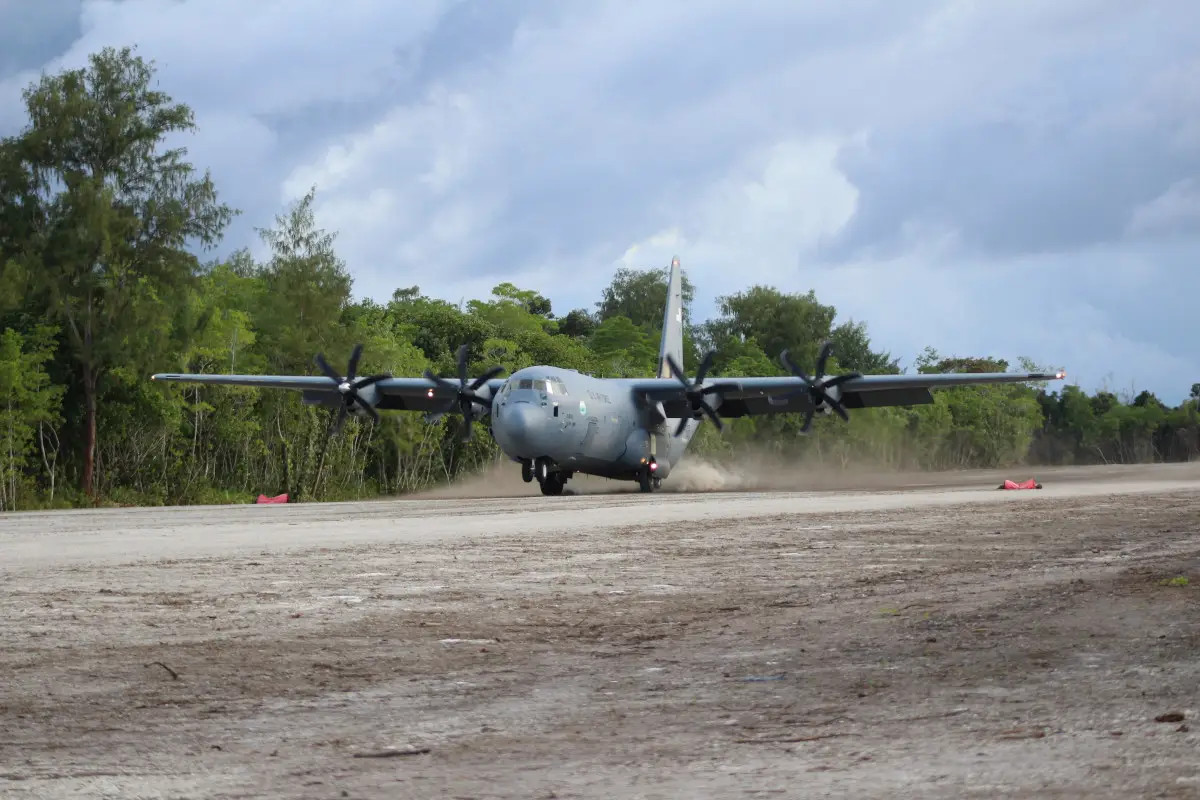
It would not necessarily be surprising to see at least some degree of expansion of the facilities at Roman Tmetuchl International Airport, and possible elsewhere within Palau, in the future. The U.S. military seems poised to carry out additional air base and other military construction work elsewhere in the Pacific as part of its broader plans, too. In addition to Palau, the PDI plan specifically mentioned Micronesia and the Marshall Islands, which are also COFA states, as other foreign countries in the region that could host additional infrastructure.
The employment A-10Cs in this particular exercise on Palau and Guam is significant specifically for the Warthog community, too. The Air Force has literally described these aircraft as a “plus one” to its desired core future tactical combat jet fleets, and the service now looks to finally be making headway in longstanding efforts to retire the type for good.
At the same time, a significant number of Warthogs are still likely to remain in service for a number of years and the community has been very actively exploring new ways to ensure its relevance in future higher-end conflicts. This has included the development of new and improved tactics, techniques, and procedures, as well as efforts to integrate new stores onto the aircraft, notably the ADM-160 Miniature Air-Launched Decoy (MALD). An A-10C loaded with MALDs, which are essentially small cruise missiles with electronic warfare packages rather than warheads that can jam hostile radars and other emitters or fool them into thinking waves of ‘ghost’ planes are attacking from various directions, could enable the jets to help clear paths through enemy air defenses.
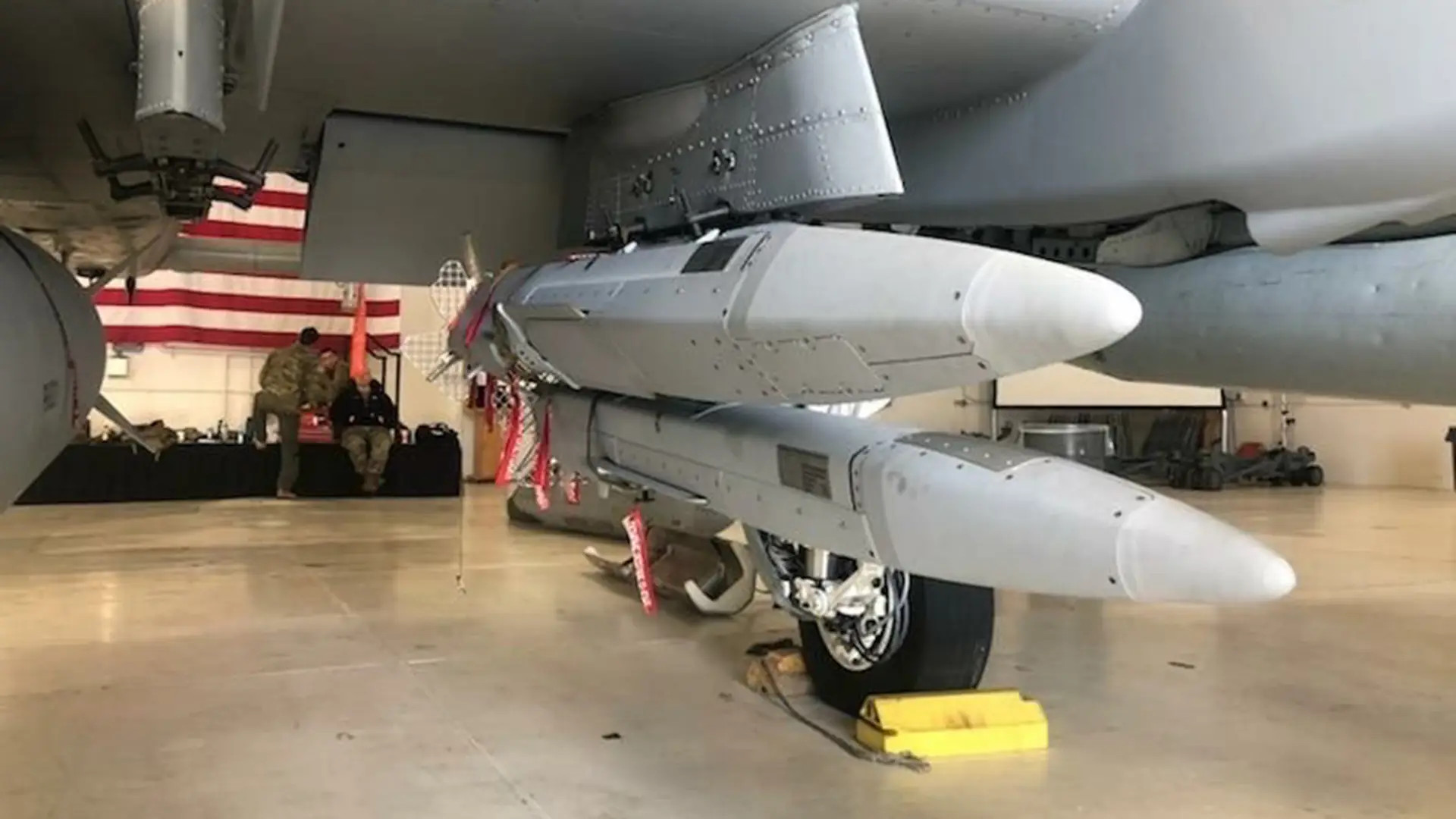
Warthogs as launch platforms for actual AGM-158 Joint Air-to-Surface Standoff Missile (JASSM) cruise missiles is something that is also now under discussion. You can read more about how the A-10C’s role in higher-end fights could expand in this War Zone feature from earlier this year.
In the context of a future major conflict in the Pacific, A-10Cs could be used in more traditional roles, too, especially against smaller or less well-defended ships and other watercraft, including logistics vessels operating away from the center of the fighting. Though still not a very well-known mission set for the Warthog, A-10 units have long trained for maritime-focused operations, especially to help to counter swarms of small boats. Networked swarms, or at least large coordinated groups, of drone boats, in particular, could very well be a feature in a future large-scale war.
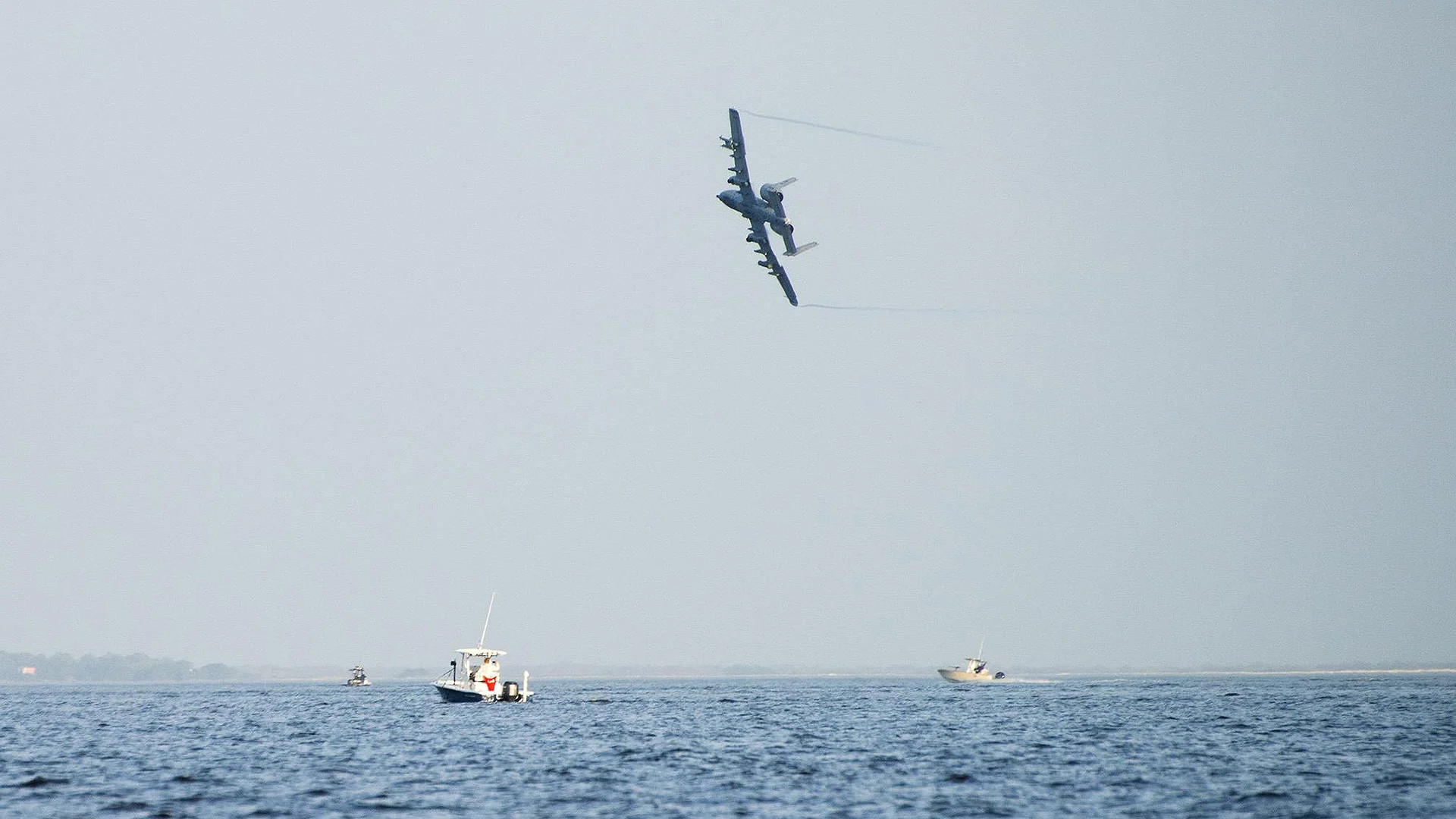
With all this in mind, it is worth noting that the Air Force in fact designated the 23rd Wing as one of a number of ‘lead wings.’ The idea is for these wings to be prepared to lead expeditionary task forces on ACE/DFE type deployments in the future. In July the 23rd took part in Exercise Agile Flag 22-2, which was described as “Air Combat Command’s first lead-wing certification event designed to demonstrate the 23rd Wing’s capability to generate combat airpower while continuing to move, maneuver, and sustain the Wing and subordinate force elements in a dynamic and contested environment.”
Pictures from Agile Flag 22-2 in many ways mirrored what is happening now on Guam and Palau, including the establishment of a ‘forward’ operating location at Avon Park in Florida complete with a similar array of five large tents.
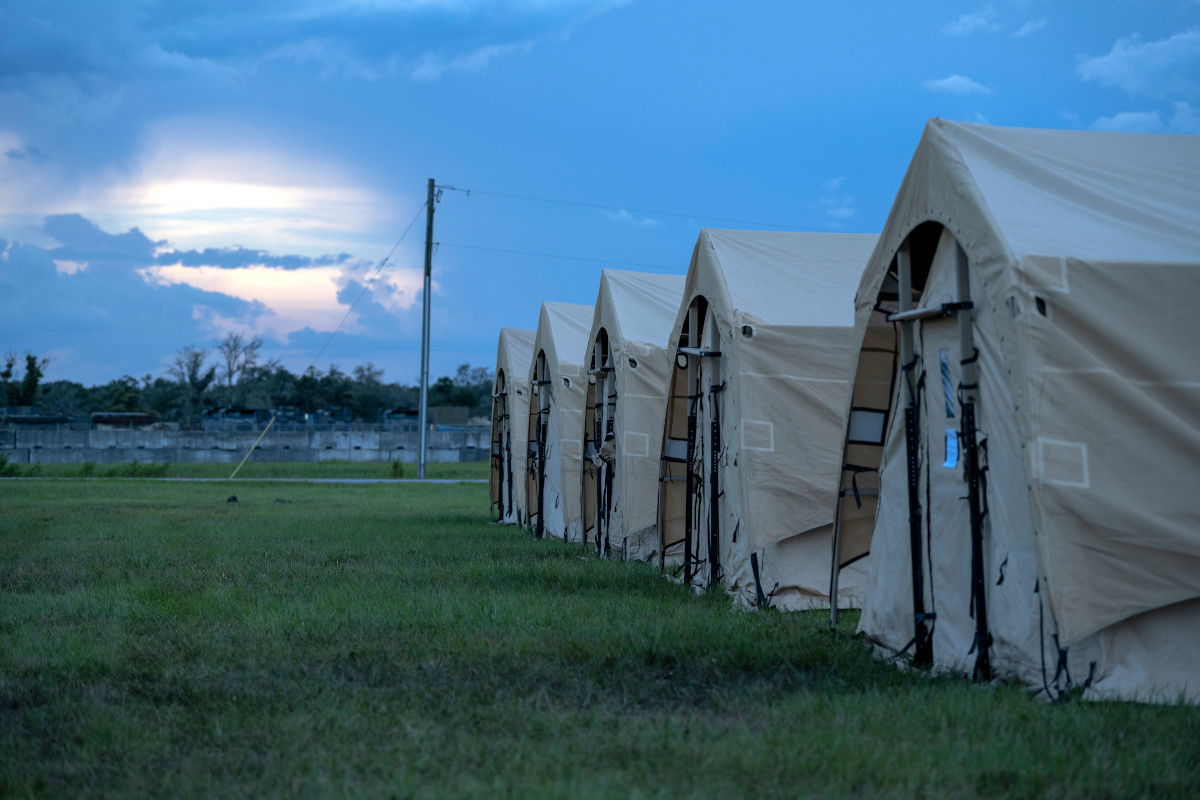
The current Iron Thunder exercise on Guam and Palau highlights major potential hurdles these new concepts of operations will have to contend with, too. The biggest of these is simply the long distances involved. Palau is some 800 miles to the southwest of Guam, which is itself around 3,865 miles to the west of the Hawaiian islands. It’s more than 8,000 miles between Moody Air Force Base in Georgia and Palau’s Roman Tmetuchl International Airport.
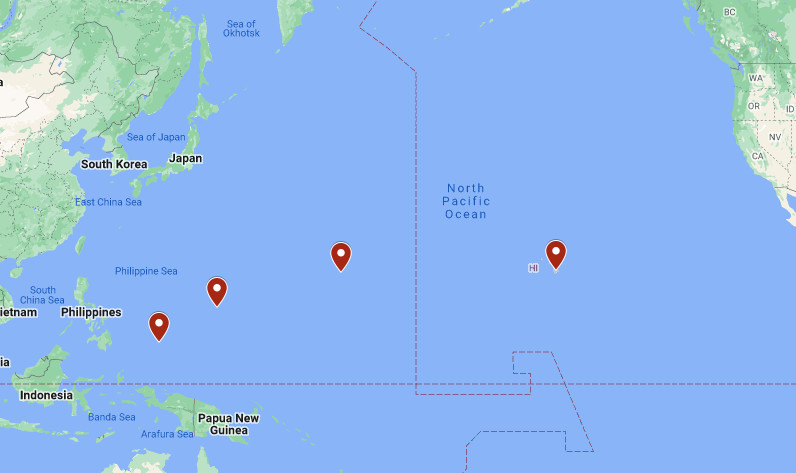
It’s not clear how many total refuelings and/or stopovers at other bases the 23rd Wing’s A-10Cs had to make before even getting to Guam. Pictures the Air Force released showing the Warthogs in transit include shots showing some of the jets refueling while passing over Wake Island, another strategic U.S. island territory in the Pacific that has seen its aprons and other military infrastructure expanded in recent years, and is very roughly halfway between Hawaii and Guam.
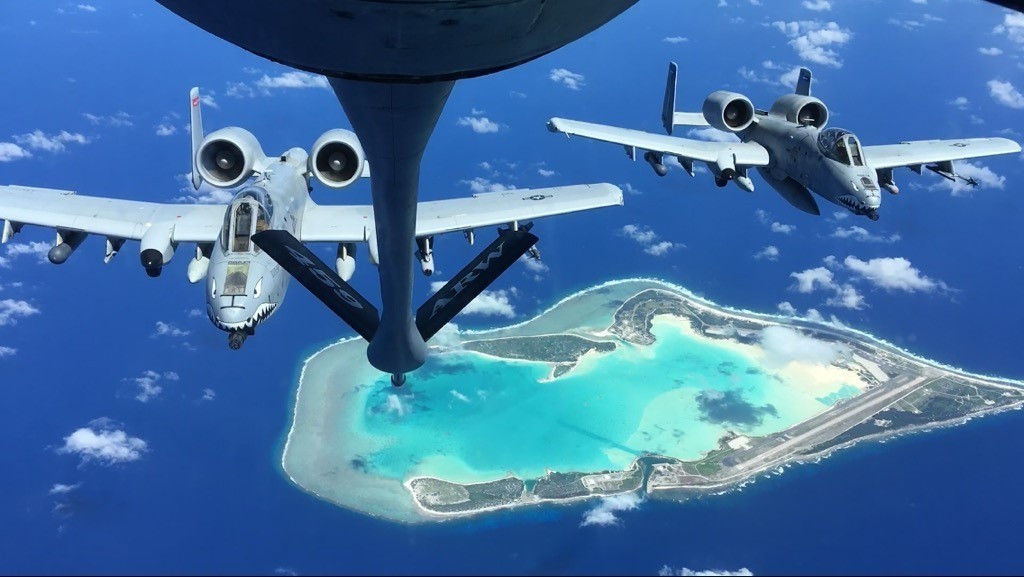
Beyond that, once A-10Cs, or any other aircraft, arrive at a forward location, supply chains still need to be established and maintained to support any sort of persistent operations, which will be no easy task, either. Especially in a high-end conflict against a near-peer adversary such as China, all of this would have to be carried out in a likely dense and multi-faceted threat environment with enemy forces potentially striking from the air or the sea (or undersea) from multiple vectors.
From an operational perspective, Palau is still remote to many potential flashpoint areas in the region, such as the Philippines (570 or so miles to the west, at closest) and Taiwan (some 1,400 miles to the northwest).
All told, the Iron Thunder exercise looks to be a significant new development in the Air Force’s efforts to prove out new expeditionary and distributed concepts of operations that would be important in any high-end conflict. It’s a similarly important event for the Warthog community, which very much wants to be a part of this future.
Contact the author: joe@thedrive.com
